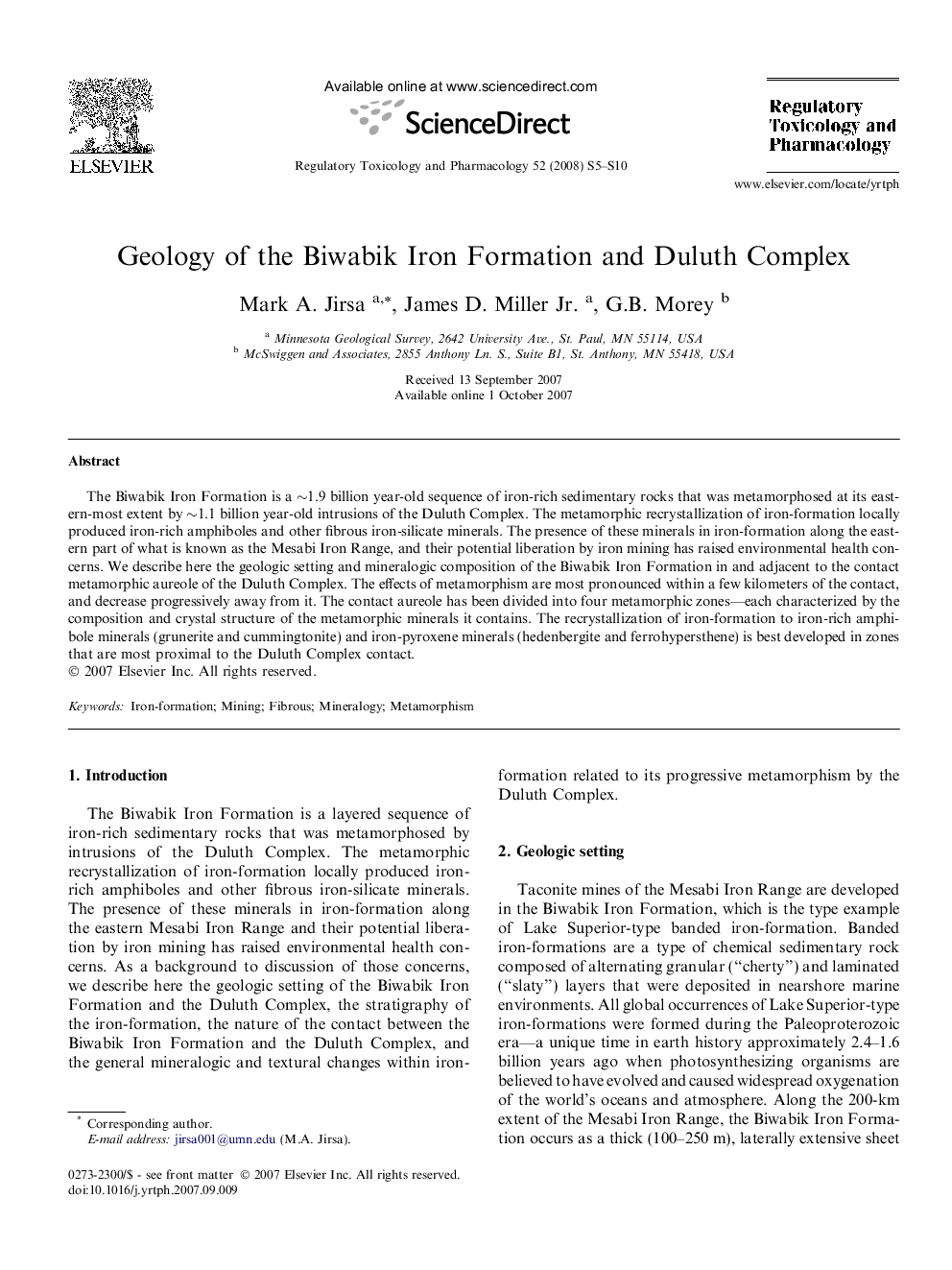| کد مقاله | کد نشریه | سال انتشار | مقاله انگلیسی | نسخه تمام متن |
|---|---|---|---|---|
| 2592862 | 1132051 | 2008 | 6 صفحه PDF | دانلود رایگان |

The Biwabik Iron Formation is a ∼1.9 billion year-old sequence of iron-rich sedimentary rocks that was metamorphosed at its eastern-most extent by ∼1.1 billion year-old intrusions of the Duluth Complex. The metamorphic recrystallization of iron-formation locally produced iron-rich amphiboles and other fibrous iron-silicate minerals. The presence of these minerals in iron-formation along the eastern part of what is known as the Mesabi Iron Range, and their potential liberation by iron mining has raised environmental health concerns. We describe here the geologic setting and mineralogic composition of the Biwabik Iron Formation in and adjacent to the contact metamorphic aureole of the Duluth Complex. The effects of metamorphism are most pronounced within a few kilometers of the contact, and decrease progressively away from it. The contact aureole has been divided into four metamorphic zones—each characterized by the composition and crystal structure of the metamorphic minerals it contains. The recrystallization of iron-formation to iron-rich amphibole minerals (grunerite and cummingtonite) and iron-pyroxene minerals (hedenbergite and ferrohypersthene) is best developed in zones that are most proximal to the Duluth Complex contact.
Journal: Regulatory Toxicology and Pharmacology - Volume 52, Issue 1, Supplement, October 2008, Pages S5–S10